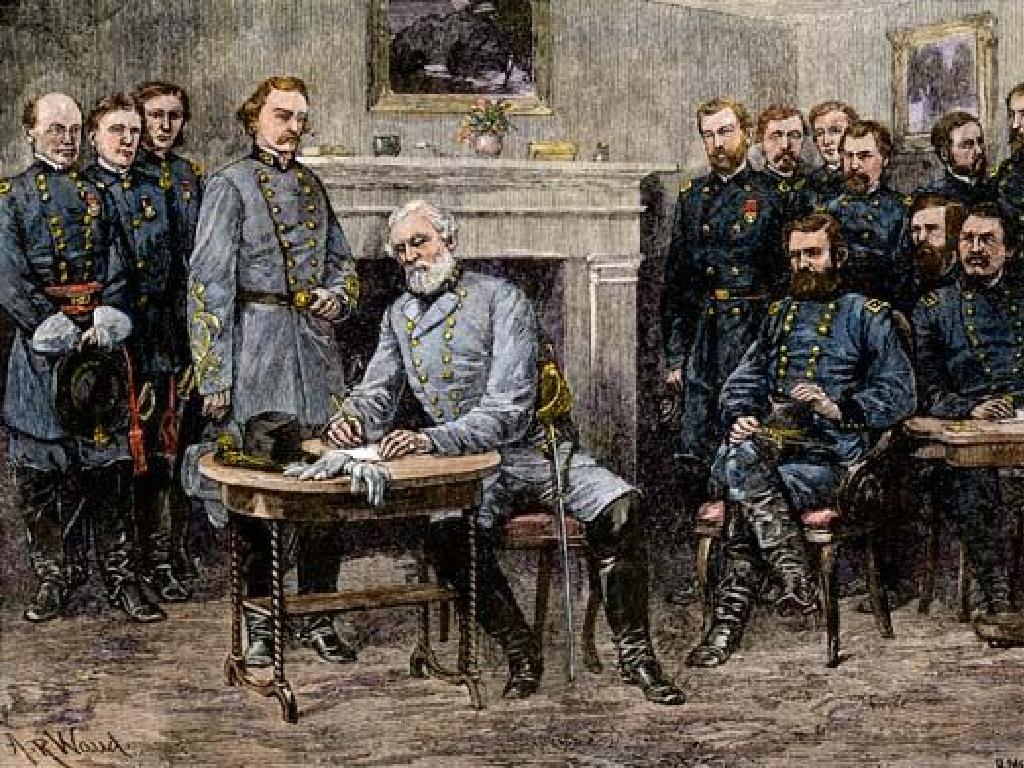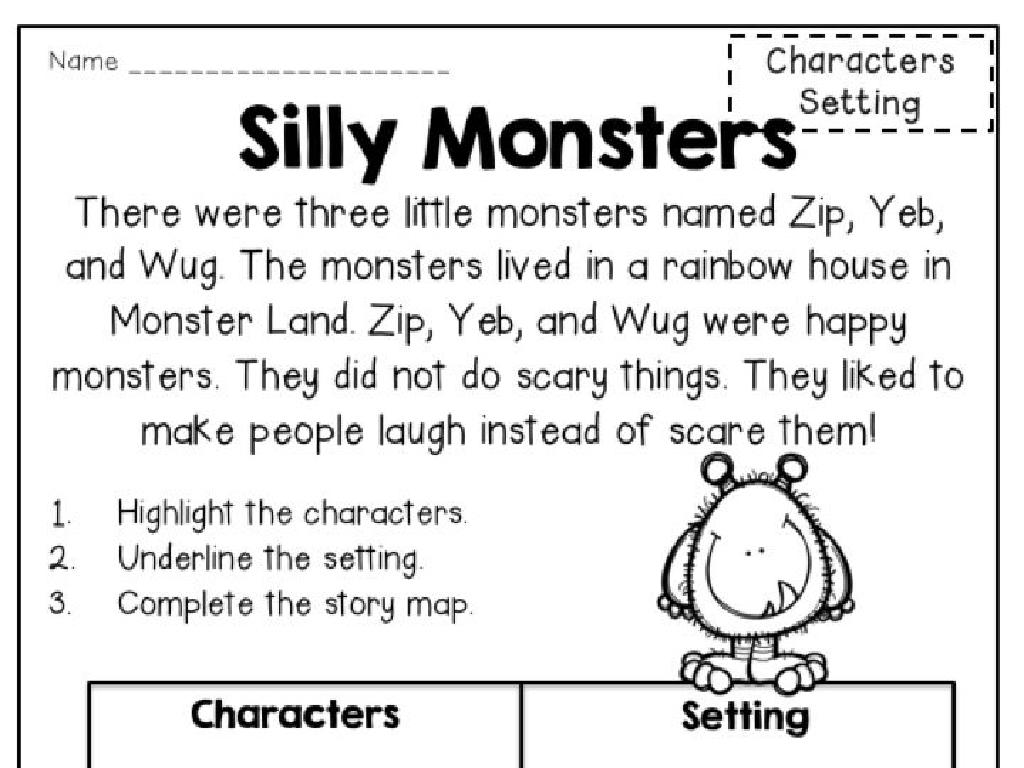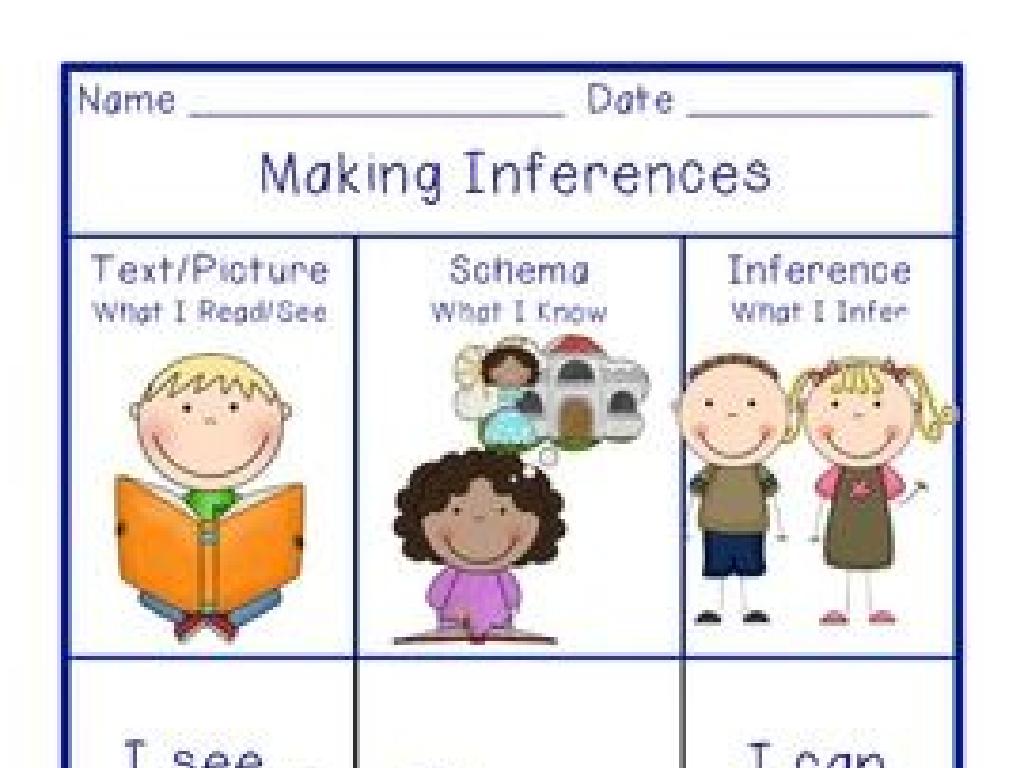Are There Enough?
Subject: Math
Grade: Kindergarten
Topic: Comparing Up To 10
Please LOG IN to download the presentation. Access is available to registered users only.
View More Content
Are There Enough?
– Greet our young mathematicians
– Today is about playing with numbers
– Understanding ‘enough’
– ‘Enough’ means having as many as we need
– Engaging with real-life examples
– Do we have enough crayons for the class?
|
This slide is designed to introduce Kindergarten students to the concept of quantity and comparison by using the term ‘enough’. Start the lesson with a warm welcome to create an inviting atmosphere. Explain that math can be fun and is about playing with numbers. Introduce the word ‘enough’ by relating it to everyday situations they understand, like having enough crayons for each student in the class. Use real-life examples to make the concept tangible, such as comparing the number of cookies to the number of students. The goal is to make them comfortable with the idea of comparing quantities in a practical context.
Understanding ‘Enough’
– ‘Enough’ means having what we need
– Observing glasses of water
– Which glass would quench your thirst?
– ‘Enough’ with numbers
– Using items up to 10 to learn ‘enough’
– Activity: Enough or not enough?
– Class will sort items as ‘enough’ or ‘not enough’
|
This slide introduces the concept of ‘enough’ to Kindergarten students by relating it to everyday situations, like having enough water to drink. Start by explaining that ‘enough’ means having the amount that is needed – not too little and not too much. Show pictures of glasses with different water levels and ask students to identify which one has enough water. Transition to numbers by using items up to 10 and ask students to determine if there are enough items for a given situation. For the activity, provide various sets of items and have students sort them into ‘enough’ or ‘not enough’, reinforcing the concept through hands-on learning.
Counting Fun: Do We Have Enough?
– Count objects to check enough
– Let’s see if we have enough blocks for everyone!
– Count together with fun counters
– We’ll use colorful counters to make it exciting.
– Count up to 10 only
– Remember, stop counting when you reach 10.
|
This slide introduces the concept of quantity assessment to Kindergarten students. The activity is designed to be interactive and engaging by using fun, colorful counters. The goal is to help students practice counting objects up to 10 and determine if they have enough for a particular purpose, such as one counter for each student. Teachers should guide the counting process, ensuring that students understand the limit of 10. The activity can be done with various objects like blocks, stickers, or toys. Possible activities include distributing items among students, counting classroom supplies, or creating simple crafts that require a set number of pieces. The emphasis is on the counting process and understanding the concept of ‘enough’ rather than on the exact number of objects.
Comparing Numbers: Do We Have Enough?
– Comparing two groups
– Checking if one group has enough
– More, less, or the same?
– Does group one have more apples than group two?
– Using objects to compare
– Count items like blocks or stickers to see which group has more.
|
This slide introduces the concept of comparing quantities to determine if there are enough items in one group compared to another. Start by explaining that sometimes we need to compare two sets of things to see which has more or if they have the same amount. Use tangible objects like blocks, apples, or stickers to illustrate the concept. Encourage the children to count the items in each group and then decide if one group has more, less, or the same amount as the other. This activity will help develop their counting skills and understanding of basic comparison terms. Make sure to use clear and simple language appropriate for Kindergarten students.
Do We Have Enough Apples?
– Our basket holds 10 apples
– Count apples together
– Let’s count out loud from 1 to 10
– 10 apples means it’s full
– Less than 10? We need more!
– If we count only to 8, we need 2 more apples to make 10
|
This slide is designed to teach Kindergarten students the concept of comparing quantities up to 10. Use a real or illustrated basket and apples to visually demonstrate the counting process. Encourage the students to count along as you place apples into the basket. Reinforce the concept that if the basket is full with 10 apples, then we have enough. If there are less than 10, we need more to fill the basket. This activity helps students understand the idea of ‘enough’ and introduces basic subtraction in a tangible way. For the activity, you can have different baskets with varying numbers of apples and ask students to determine if there are enough apples in each basket.
Let’s Practice Together: Are There Enough?
– It’s your turn to compare objects
– Look at groups of items I show you
– Decide if each group has enough
– Are there as many toys as kids?
– Remember, only up to 10 items
– Count carefully, use your fingers if needed
|
This slide is an interactive class activity designed to help Kindergarten students practice the concept of comparing quantities up to 10. Display different groups of objects on the board or via a projector. Ask the students to observe each group and determine if there are enough objects for a given scenario, such as enough crayons for each student in the group. Encourage the children to count out loud and use their fingers to track the number of items. Possible activities include comparing sets of pencils to students, apples to lunch boxes, or blocks to builders. This hands-on approach reinforces their counting skills and understanding of the concept of ‘enough’.
Class Activity: Enough or Not?
– Let’s work on a fun worksheet
– Count objects in each group
– How many items do you see?
– Circle ‘Enough’ or ‘Not Enough’
– Choose the right option for each group
– Share answers with the class
– Tell us what you found out!
|
This activity is designed to help Kindergarten students understand the concept of quantity by comparing groups of objects up to 10. Provide a worksheet with different groups of objects and two options next to each group: ‘Enough’ or ‘Not Enough’. Guide the students to count the objects in each group and decide if the number meets a certain requirement (e.g., enough for each student in the class to have one). After counting, they will circle the appropriate option. Encourage students to explain their reasoning when sharing answers with the class. This will help them articulate their thought process and reinforce their understanding of the concept of ‘enough’. Possible variations of the activity could include using real objects, interactive digital tools, or role-playing scenarios where students have to determine if they have enough items for a specific purpose.
Fantastic Counters!
– Excellent work with counting!
– You’re becoming math stars!
– Practice makes perfect
– The more you count, the better you get!
– Keep counting at home!
– Try counting toys, steps, or even snacks!
|
This slide is meant to congratulate the students on their hard work during the lesson on counting and comparing numbers up to 10. It’s important to encourage their progress and remind them that they are improving in math. Reinforce the idea that practice is key to becoming even better at counting. Suggest fun counting activities they can do at home, like counting toys, steps, or snacks, to make practice enjoyable. This will help them to continue learning outside of the classroom and see math as a part of their everyday life.
Activity Time: Enough or Not Enough?
– Play ‘Enough or Not Enough’ game
– Look at the picture shown
– Use fingers to show if enough
– If there are 10 or more items, show all your fingers
– 10 fingers mean enough, less means not
– If there are fewer than 10 items, show the same number of fingers as items
|
This activity is designed to help Kindergarten students understand the concept of quantity and comparing numbers up to 10. Display a variety of pictures with different numbers of objects. Guide the students to count the objects and decide if the number is equal to, more than, or less than 10. Encourage them to use their fingers to represent their answer, reinforcing their understanding of quantity and number comparison. Possible variations of the activity could include using real objects, drawing the items, or grouping students to work in teams for collaborative learning. This hands-on activity not only makes learning fun but also enhances fine motor skills and number recognition.






